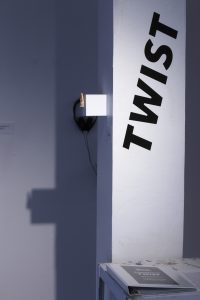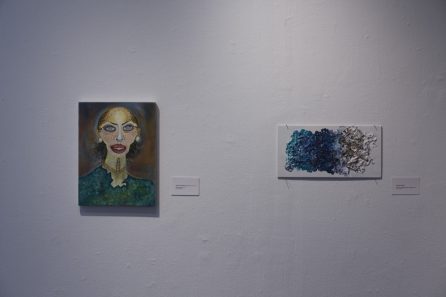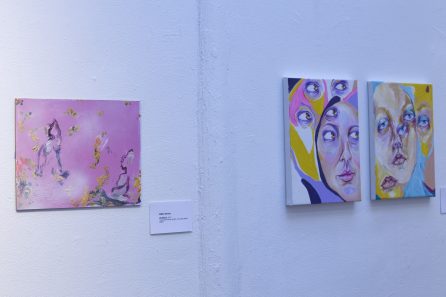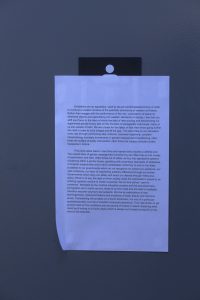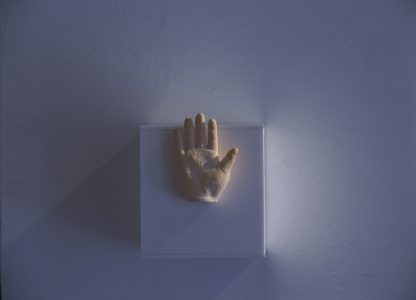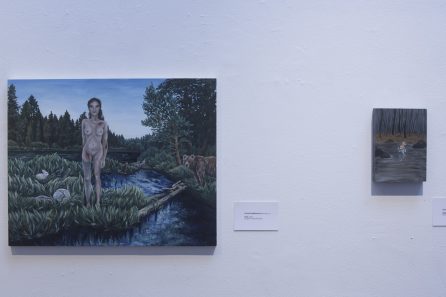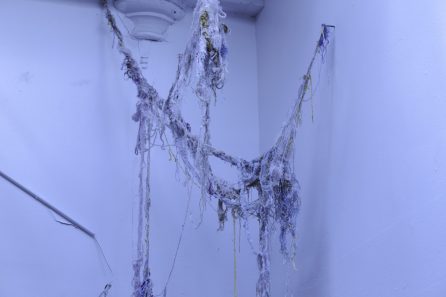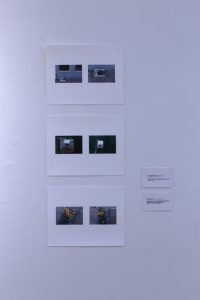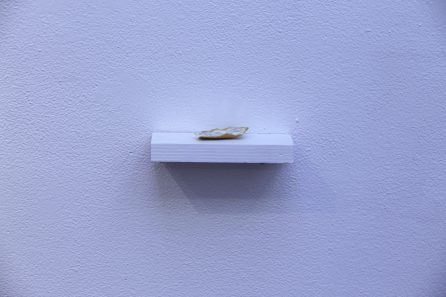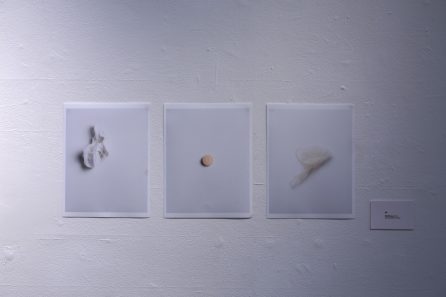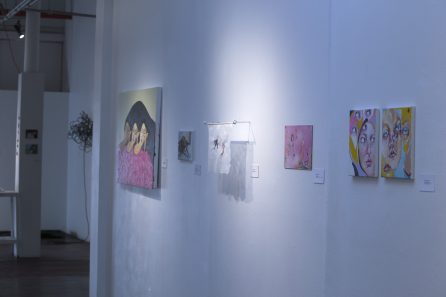The Fine Arts department at Parsons The New School For Design is pleased to announce the group exhibition Twist. The diverse selection of works presented in Twist explore what it means to “twist,” rotate, turn, distort, alter, skew, pivot. Much of Twist explores the physical and formal application of the title word. Some artists utilize formal twists, contorting the materials to create dynamic new forms. This application involving the physical intertwining of materials exists in Paola Mateo’s sculpture using twisted plastic bags and tape to create organic and active forms.
The depiction of bodies in curved, twisted, and contrapposto poses can be traced back to the art of many ancient cultures. Today, artists recognize the ability of human bodies to be expressive and gestural when bent. Kaiyu Huang’s paintings, Man With a Neck and Man Without a Neck, imply a stretching and a bending of the neck that seems strained. In Eli Condon’s piece DIRGE/NO TITLE/WORKING TITLE/THE GUYS/THE WORK, narrative, gestural figures wrap around the gallery walls, referencing and stretching art historical depictions of the human body.
To twist is also to make a decisive action, an intervention, a subversion. The action of twisting can be applied not just to objects and bodies but also to societal structures and normative narratives. Artist Xi Song plays with the twists that occur in language through mistranslation and wordplay in A Microwave. Frank Eraso engages twisting as a mode of rupture, in his Disruption Series in order to subvert the social expectations of the gallery space and that of binary bathrooms. Iman Mahzar warps the misconceptions and realities about her experience as a Muslim, while placing a clever twist on white feminist art of the Guerrilla Girls in Advantages of Being a Muslim.
